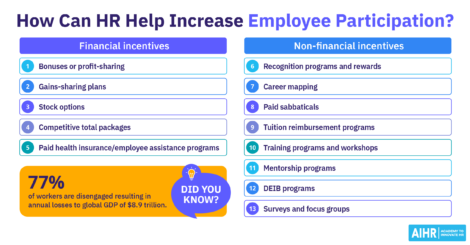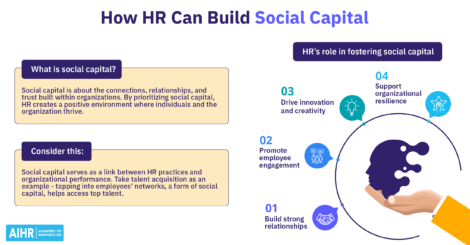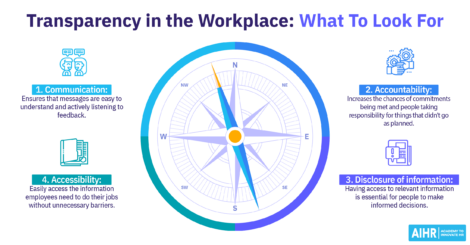6 Keys to Effective Collaboration in the Workplace
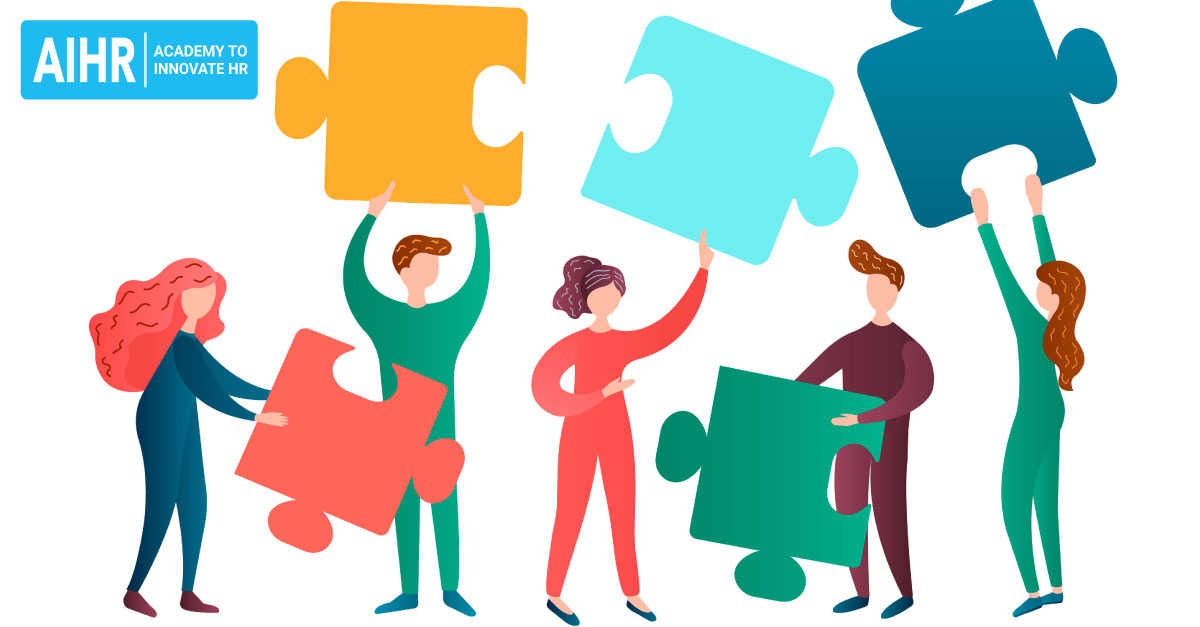
During a recent episode of AIHR Live, I spoke with Barry Flack, Global HR Leader and Strategist, about effective collaboration in the workplace and the key ingredients for success in this area. This article is a round-up of our fascinating conversation. Enjoy!
Contents
Importance of effective workplace collaboration
What role does HR play in highly collaborative organizations?
Pitfalls and misconceptions around collaboration
6 Keys to effective collaboration in the workplace
1. Kindness
2. Positivity
3. Trust
4. Empathy
5. Efficiency
6. Clarity & purpose
How can HR use technology to improve workplace collaboration?
If you rather watch a video, you can find the entire interview here:
The importance of effective collaboration in the workplace
Barry: “Currently, we are massively focused on collaboration in terms of the pandemic of course. I’d like to give a bit of context around the issue of the importance of collaboration in general though. It’s something that’s spoken about a lot, highly misunderstood, and it’s been a challenge for us to effectively deploy for probably about 4 decades now.
What I mean by that is simply that for a lot of our parents and grandparents’ generation there was a much simpler life, there was a much simpler view that efficiency, command & control, and mass customization delivered business outcomes for our organizations.
The complexity element entered around the end of the 20th century and the ingredients for success since then have very much been about ideation and innovation. It’s about organizations that adapt and re-adapt by physically getting good, talented individuals together to help them re-energize as a business.
Our importance as HR professionals in there has been going on for some time and our nemesis, as we progressed over the last few years around this, has been the specter of command & control. We have far too many organizations still tied to that level of ‘addiction’ but we know that anything we see out there in terms of figures or measurements, is very much about the innovation angle that collaborating as peers boosts. It’s about the ideas that people who work together bring to the table, this has been absolutely paramount in the success of organizations today.”
What role does HR play in highly collaborative organizations?
Barry: ” To answer this question, I suggest we look at the image below. It’s a bit of a gate for absolutely every HR professional out there who wants to do the right thing in their organization.
What we’ve got here is the issue of Theory X and Theory Y. It’s an image that is 70 years old and it’s still pertinent. What happened back then is that Douglas McGregor posed the question of do we follow theory X or do we have the theory Y assumption?
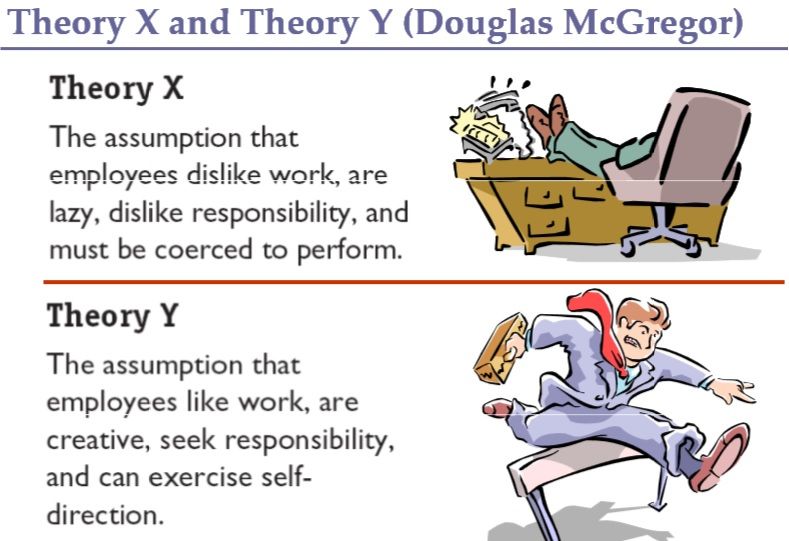
Theory X has no scientific basis. So straight away, in terms of HR, go in and use the organizational template you have and cleanse it. Get rid of the stuff that has flowed from theory X; the individual as a king, the leader as the all-known supremacy who frankly trickles down information. The planning that goes into so much of the work that we do. If you’re responsible for putting in place organizational charts, then frankly burn them in the garden, they are worthless.
Let us declutter our organization and declutter our thinking to recognize that success today is about bringing together incredibly talented people who are already motivated. Put simply, if you do not put people at the center of absolutely all of your thinking, non of this collaboration piece will work.
Once the decluttering is finished, HR can step into that evolving skill set. You got rid of all of that admin stuff that can be automated by a computer, stuff that makes no use to people. You can, instead, sponsor hackathons, you can develop design workshops with the product teams, you can create employee journeys and increase the effectiveness of onboarding and recruitment.
There are a whole series of new world techniques that our HR people need to master and there is a time and a place to do that. That, to me, is about effective collaboration in the workplace.
Ultimately, what we need to understand in this world we live in today, is something I call sense-making. I believe sense-making is going to become more of an issue in collaboration. The world that we have, in terms of complexity, we don’t understand. Look what we wake up to every day; to a world of masks, a world of remote working, a world where everything is turned upside down, and nobody predicted it.
The sooner we embrace that complexity of the market, of our society, and ultimately of people the sooner we can start designing around the full effectiveness of a lot of good people working together on these things.
Pitfalls and misconceptions about collaboration
Barry: “If we’re at the stage of incremental progression, then we are going to need to create a system. The system for me is the organization we’re operating in. I call it system other people use the word culture. For instance, we cannot let people operate in an environment where the natural tendency is for silos, for utterig phrases like “Sales are the type of people who….”, “IT are the type of people who..”, etc.
So outside collaborative workshops and the environments, you’ve got to build a culture of trust, a culture where psychological safety is the sort of thing that’s important. Where you are bringing people together, where you’re actively boosting the frequency of thanking people across the organization, of creating networks, relationships. You are tirelessly working the system in a way that connects the nodes inside your business as much as possible and that’s hard.
One of the misconceptions around collaboration in the workplace is that it happens spontaneously. It does and it doesn’t. You have to be very conscious of your collaboration.
We haven’t spoken about the organizations that have gone ‘all-in’ yet. The context is different, but if you want to look at organizations that have done the decentralized collaborative model for many years, go read up on wlgore, go look on Handelsbanken, look at those organizations and understand what they do. If you are a little bit more modern, and a bit more of a hipster, go after Spotify, look at Zappos. Understand the tribes, understand the squads, put together the sense that there is an obsessive desire to make sure that people understand all the way through that the team collaboration and the collective brainpower and talent of people are what drives successful collaboration in the workplace at most.
There is another thing that I want HR people to be absolutely aware of in this regard. There is a niceness to collaboration. The mastery element of this means you that go in and you know what you do and yet you contribute based on the fact that you’re not just a carried person element. There is a very serious element to these organizations. Their relative targeting is a constant focus on improvement rather than the internal competition that you get around lots of organizations.
In other words, avoid the toxic behaviours. And, as HR people, look and see what reinforces collaboration at all times.”
6 Keys to effective collaboration in the workplace
1. Kindness
Barry: “For many years we’ve been operating in a way where, in the boardroom, hard, technical skills have been overly obsessed upon and issues such as kindness have been seen as ‘soft’. As HR people, we’ve won the cultural war, we’ve understood that there is a true and obvious benefit of having something like kindness inside or organization. Kindness is different from niceness by the way; niceness can be gamed, kindness are acts, it’s an outcome.
Neuroscience has shown that if we’re in that collaborative state and we are about individuals that are working together, this gives off serotonin inside people’s heads. So these are the sorts of things that give us energized workplaces, that give people self-esteem, that allow individuals to really buy into it. We’re (finally) growing up and we’re learning from a psychological point of view about what makes people tick and those are frankly the sorts of things that are about our humanity and humane organizations.
Collaboration in itself is very focused on kindness at its heart, the empathetic elements of it. If you think about it, it’s about me and you working together, with you actively listening and understanding my world view and vice versa. I have to be present, I have to be understanding, I have to come up with a solution that is ultimately as wide and deep as we can make it because, as I mentioned before, sense-making in this mad world is the biggest skill we in organizations need to embrace and we do it by collaborating with each other.”
2. Positivity
Barry: “Once again, this one is very much linked to the mindset that we bring into these things. There is no shortage of problems and collaboration also means that we’re going to have a whole bunch of setbacks. So stepping into the collaborative mindset positively is absolutely key.”
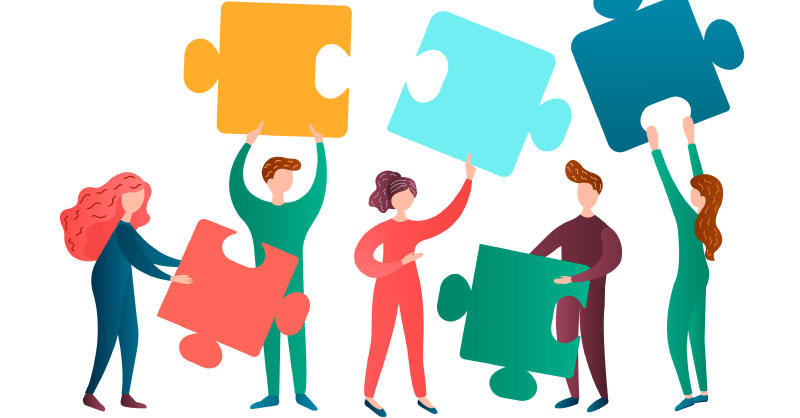
3. Trust
Barry: “Trust comes in two dimensions. It’s very much about my capability, your capability. Collaboration falls over if people get carried. I’ve done that, I’ve seen it, it becomes toxic.
The other side of it is, there has to be the emotional intelligence, something we’ve massively underestimated over the years, that allows you and me to continue to work together and having the tough conversations. That is a very understated skill set that far too many of our executives do not have. That ability to enable you to, safely, put everything out on the table, to question things, for you to say ‘that is not the direction we should be going in’, etc.”
NV: I imagine not everyone naturally has the same level of emotional intelligence, how can organizations ‘get’ people who are emotionally intelligent?
Barry: “To our HR audience, if I could make a plea around any recruitment activity: dial down the technical capability, we’re going to outsource that and automate it and dial-up emotional intelligence. That plus diversity. Put more women in leadership positions, for the good of the organization. The old machismo that we’re seeing in far too many populist governments around the planet have no part in an organization that, frankly, does not know it’s future.
In other words, emotional intelligence; hire for it, develop it, reward it, put it on a pedestal and stop having debates on the technical hard skills because they’re going to the automated computer.”
4. Empathy
Barry: “Empathy is related to kindness, which we’ve spoken about already, but empathy is very much about the experience. The experience from the employee, from the client, this is absolutely crucial for winning any particular commercial imperative that we have these days.”
5. Efficiency
Barry: “If we start to talk about things from a success perspective, we get to efficiency. What I mean by efficiency in this sense is not so much the agenda item, but the idea that we put some rigor around the process of collaboration in the workplace. People will know that the very best organizations have principles that underpin the way they work in collaboration. They time-box, something that has clearly been taken from the agile movement in IT, with very much driving decision-making rather than pontificating.
Efficiency in how we do it and how we carry it through is key in creating success around collaboration.”
6. Clarity and purpose
Barry: “Many organizations are keen on collaboration being linked to the social purpose of the business, ‘we remember why we’re here whether you’re in IT, product, HR or otherwise we have an overarching view of what joins us rather than a silo piece of our own.’ Belonging is a big piece of the 21st-century issues for us.
Accountability is the final part of this particular key and it’s about the delivery of that. Collaboration can look fun, it can look slightly blurred around the edges, but it’s a serious business activity. The accountability around it is about our handoffs, our ability to do stuff for each other on this, and on behalf of the organization itself.”
How can HR use technology to improve collaboration in the workplace?
Barry: “In the overview below (click on the image to enlarge it), you see what an exponential explosion we’ve had in the technology ecosystem. What we have to recognize is that we shouldn’t overemphasize the tech side of things, ultimately it is about the social side of the organization that we put in.
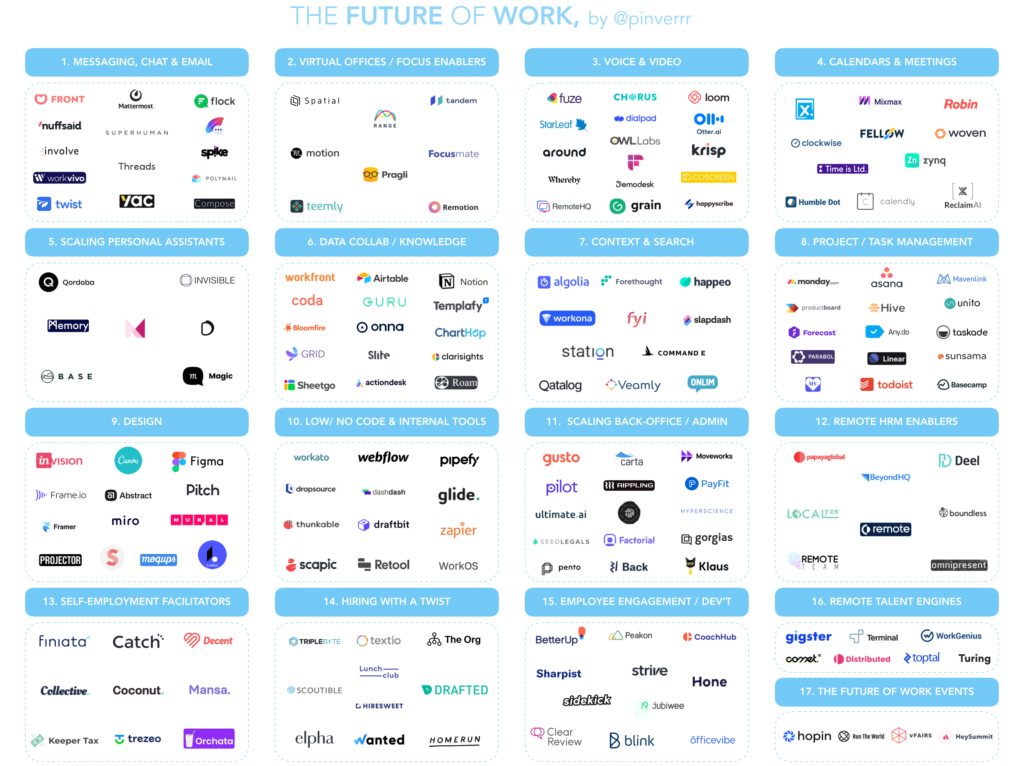
As you well know, I’m a lover of technology, but it is – and always will be – secondary to how we use it in that social technology space. HR people, go experiment, you have a lovely list of every subcategory that exists at the moment. Experiment with it, build it around your efforts, create ease with it, but ultimately remember that it is about individuals, their motivations, capabilities, and competencies.”
Weekly update
Stay up-to-date with the latest news, trends, and resources in HR
Learn more
Related articles
Are you ready for the future of HR?
Learn modern and relevant HR skills, online






